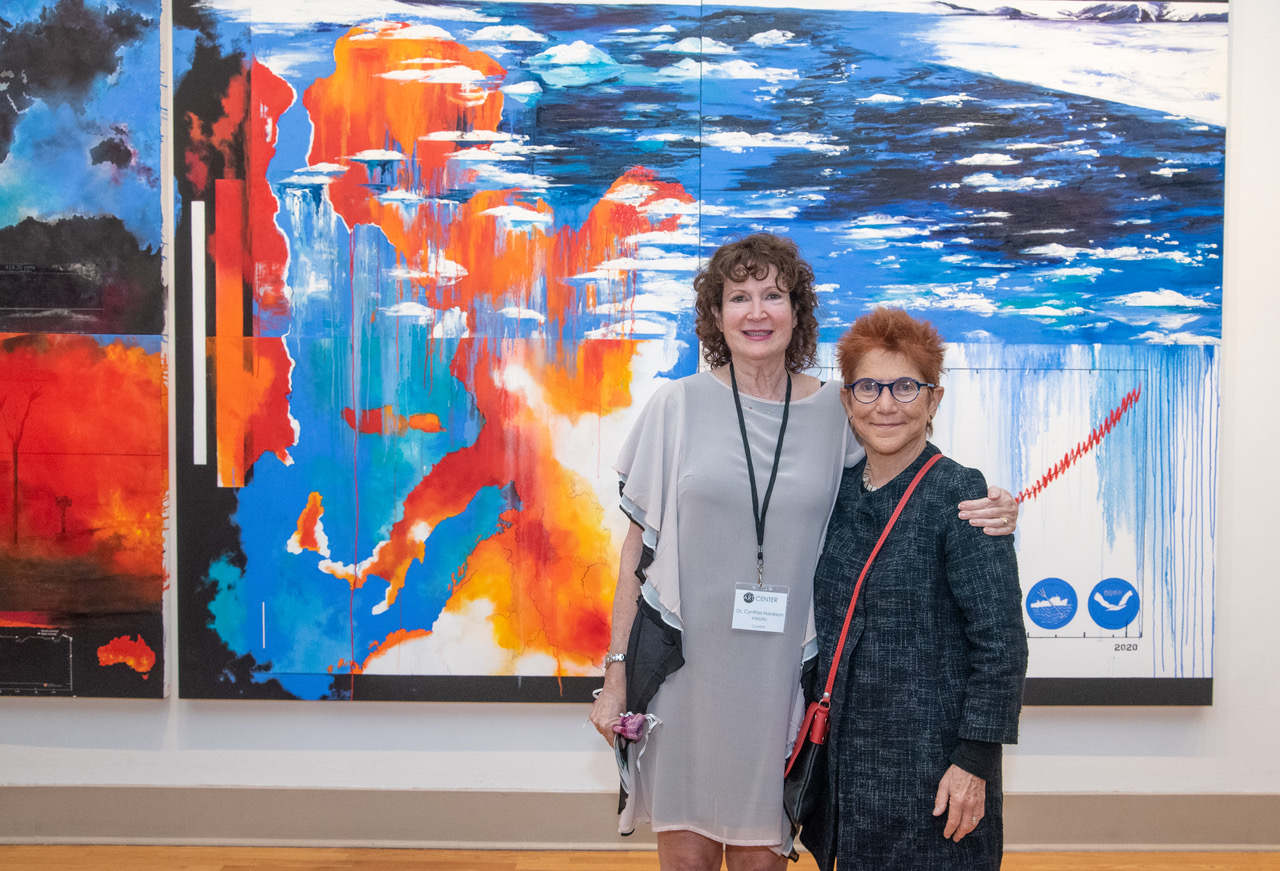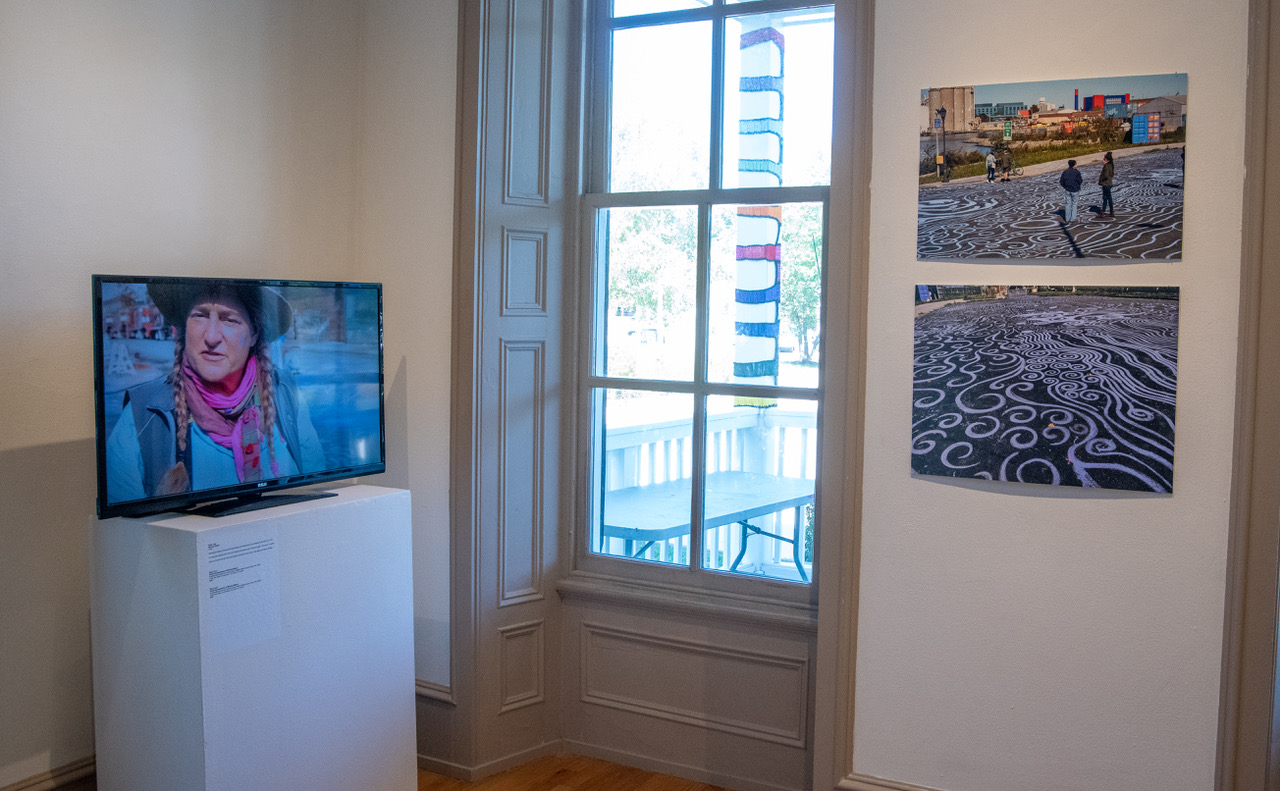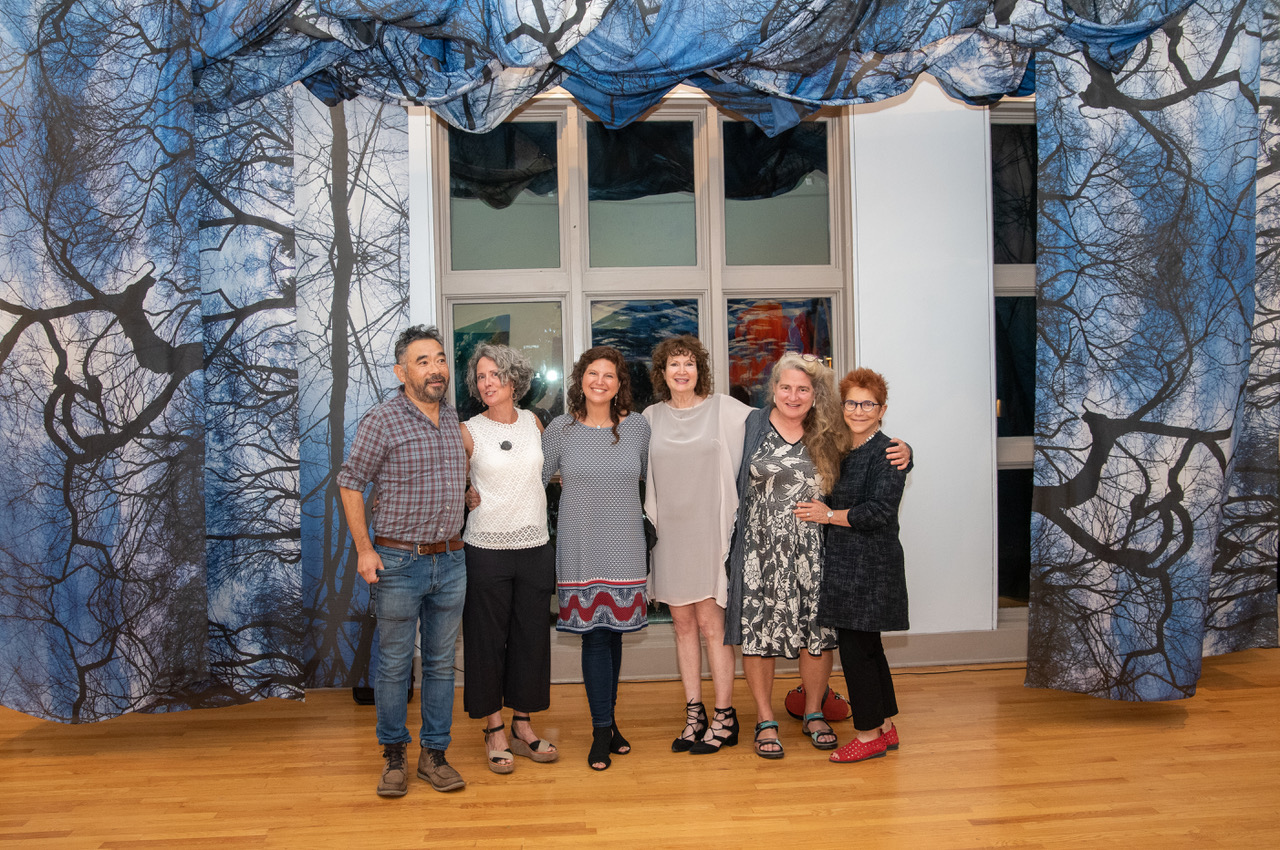
Cynthia H. Veloric and Diane Burko in front of Summer Heat 1,2; 2020. Mixed media on canvas, 84” x 162” overall.
Risky Beauty: Aesthetics and Climate Change: Not a Minute Too Soon
By Arden Kass
Risky Beauty: Aesthetics and Climate Change (closed October 28, 2022), curated by Cynthia Haveson Veloric, PhD, at Philadelphia’s Main Line Art Center, was an informative and affecting show. Showcasing six eco-artists, it presented a thoughtfully panoramic overview of life in the Anthropocene era from a diversity of artistic perspectives, both in a stylistic and literal sense. Yet distinctive as these works are, they share a common and disturbing subtext.
Every art history course identifies the conflicting forces of Eros and Thanatos, Love and Death, as the struggle at the heart of most of the world’s great masterpieces in every artform. Similarly, the works in this show embody the (curator’s) view that beauty and devastation can share space, that the eye and brain are capable of processing both inputs simultaneously. What to make of that information is our problem — and responsibility. But each artist here undeniably pairs beauty with a message about the bottomless risk we take in continuing to distance our emotions and actions from the reality of climate change.

Stacy Levy, Missing Waters, video, Painting the historic Norman Kill Creek flowing into the Bushwick Inlet, Brooklyn, NY, 2018;on right,Flushing Bay Kayak and Canoe Launch, Marina Road Corona, New York, 2020. Chalk and water on pavement, 120 yards x 15 yards.
Stacy Levy, for example, “collaborates with the force of water” to illustrate the pathways in urban areas of underground streams that have been paved over but originally provided a watershed for storm overflow. Covering the asphalt with chalk paintings that evoke almost aboriginal patterns of waves and the rhythms of water, Levy signals how, as storms intensify, water will find a way to disperse, often by forcefully re-claiming its own former pathways.
Deirdre Murphy scatters delicate, seemingly whimsical marks like handfuls of confetti across brightly colored, flat wooden disks representing Earth. Based on the flight routes taken by Arctic Terns fleeing their homes in search of more hospitable nesting grounds and interspersed with tiny dots that trace the spread of pathogens in our increasingly unstable atmosphere, the patterns chart the course of environmental disruption, chillingly underscored by the artist’s narrative of scientific research in which she participated.

Visitor contemplates Deirdre Murphy’s Invisible Currents Celestial Maps, 2022. Mixed media print on Japanese rice paper, 24” diameter.
Hiro Sakaguchi expresses his “concerns for the wellbeing of this planet that is our home” in a candy-colored, childlike palette that belies the dire import of his imagery. Beneath their appealing surfaces, Sakaguchi’s paintings detail the rapacious devastation of our world in comics-inflected line drawings; from the approach of machines of war glimpsed through a scrim of crocuses, to the sheer chaos unleashed from outer space to ocean by human incursions into every dimension of the galaxy. They are both beguiling and terrifying.
Working in an aesthetic that references “the sensory experience of being within the forest” Amie Potsic creates lush images of leaf canopies photographed or printed onto draped fabric. Her installation conjured a visual and sense memory that placed us in this sacred space essential to our survival, while silently raising the question of what will exist when that curtain is ripped away – when development, logging, or deadly wildfires, turn these magical environments into nothing more tangible than a memory.
Tim Portlock composes digitized versions of imaginary urban landscapes to question the definitions of wilderness and civilization; what represents progress, what portends dystopia? And above all, what has become of the natural landscapes these human-made vistas are replacing?

From left to right Hiro Sakaguchi, Deirdre Murphy, Amie Potsic, curator Cynthia H. Veloric, Stacy Levy, Diane Burko surrounded by Potsic’s Paradise, 2019. Archival pigment print on silk (rolled onto bolts).
One of the staunchest and most irrefutable artistic voices on climate change, Diane Burko has devoted herself since 2006 to “critical thinking... about the impact humans are having on the environment.” In monumental and/or multi-panel images of rigorously designed, masterfully painted landscapes, often documented over time and supported by the inclusion of maps and charts, Burko does not traffic in metaphor or imagined scenarios, but in scientific fact. If there is a fantastical, allegorical dimension to her work, it is in the explosive contrast between the beauty captured in her images, and the unimaginable outcome of how it is being altered in our lifetimes…and how that plays out as we walk away from the magnificent vista portrayed with meta-accuracy before us.
Yes, here on the East Coast, it is easier to be lulled into the sense that our tree-shaded, sun-dappled forests are endlessly resilient, or to embrace the hopeful notion that “something” might help us prevent catastrophe. This show illuminated the global “nature” of our situation, and its urgency. Risky Beauty, and more exhibitions like it, are both timely and essential.
Catalogue here
Arden Kass writes for stage and film, as well as interviews, cultural essays, and personal narratives.